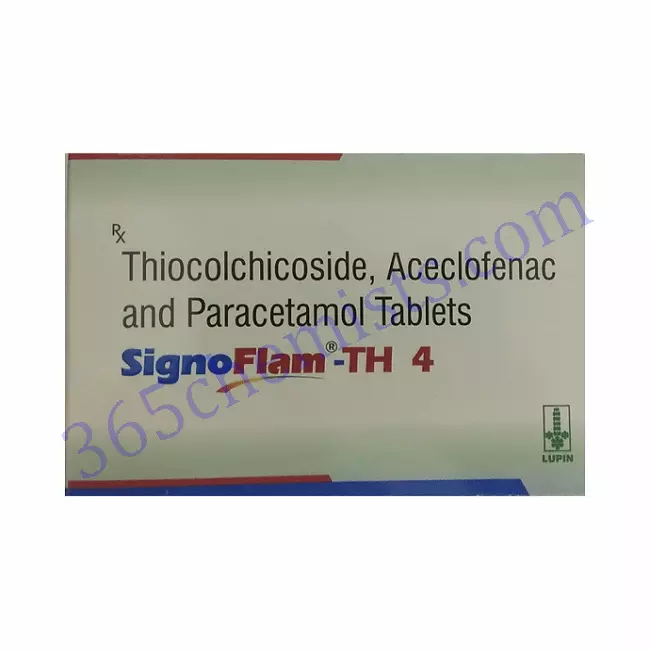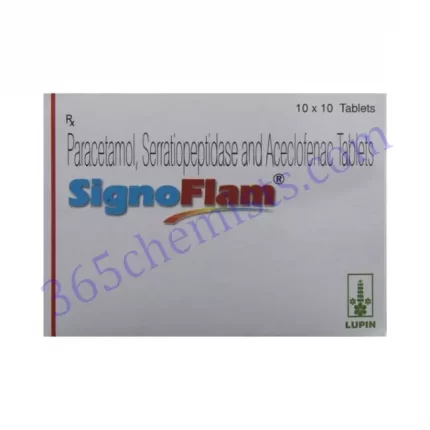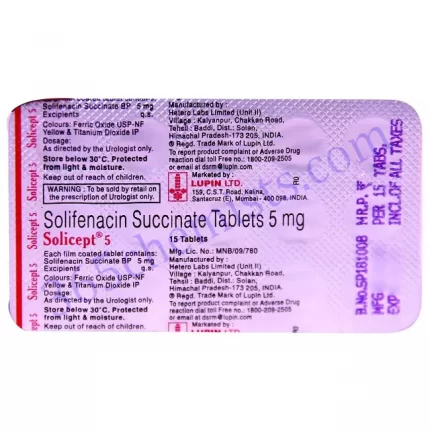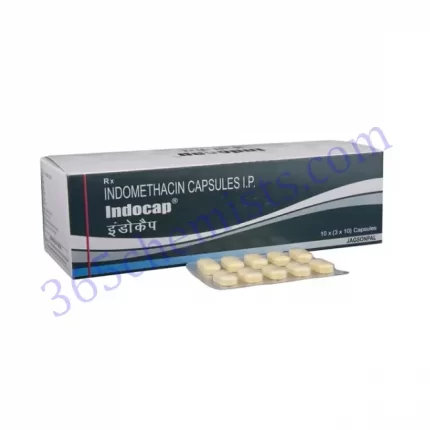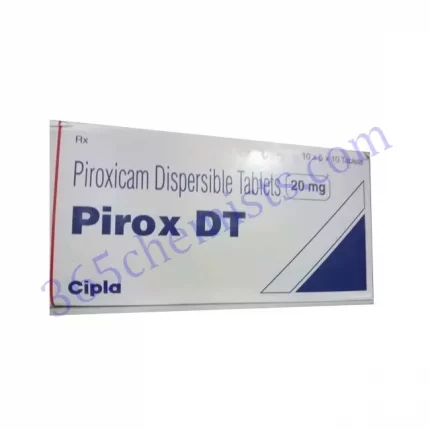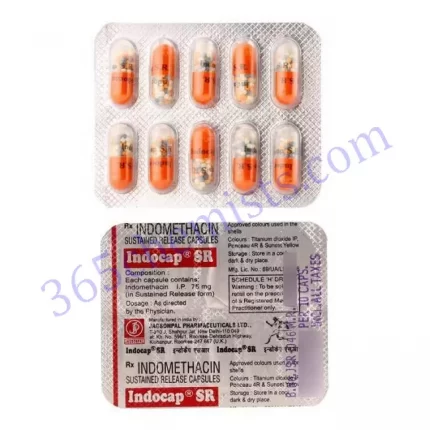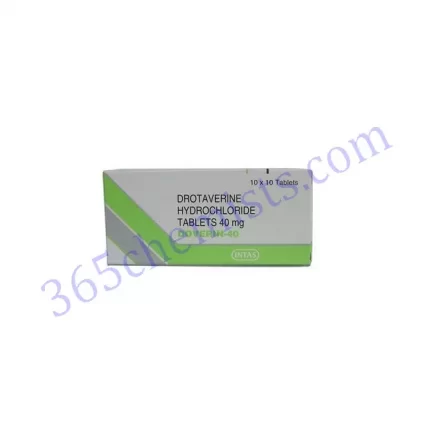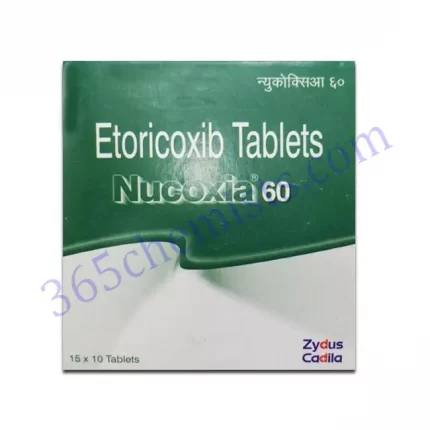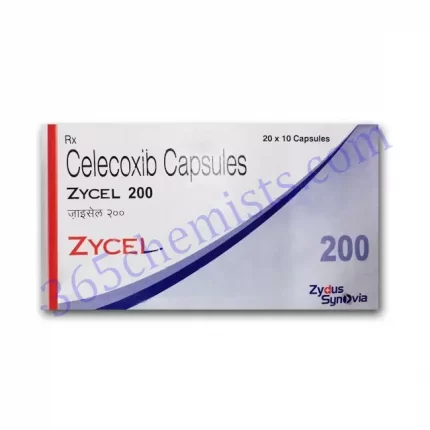Signoflam-TH Tablet (Thiocolchicoside 4mg/Aceclofenac 100mg/Paracetamol 325mg):
Thiocolchicoside, Aceclofenac, and Paracetamol are the active components of the medication that is referred to as Signoflam-TH Tablet. This medication is a combination product. This article presents a detailed analysis of Signoflam-TH Tablet, covering topics such as its applications, dosage, potential adverse effects, and safety considerations.
Uses of Signoflam-TH Tablet:
The primary application of the Signoflam-TH Tablet is the treatment of the pain and muscle spasms that are caused by a variety of conditions. These conditions include musculoskeletal disorders, sprains, strains, and sports injuries. Muscle spasms and stiffness can be alleviated with the help of the muscle relaxant thiocolchicoside. Aceclofenac is classified as a nonsteroidal anti-inflammatory drug (NSAID), and it works by reducing both pain and inflammation. Additional pain relief can be obtained from taking paracetamol, which is a common analgesic. These three components work synergistically to provide comprehensive analgesia (pain relief) and muscle relaxation (relaxation of the muscles).
Dosage and Administration:
It is possible for the recommended dosage of Signoflam-TH Tablet to change depending on the age, weight, and degree of severity of the individual patient’s condition. It is essential to carry out the steps outlined in either the label on the packaging or the instructions provided by a qualified medical professional. Taking the Signoflam-TH Tablet orally with water, preferably after eating, lowers the risk of stomach upset and is the recommended method of administration.
The standard dose that is recommended for adults is one tablet to be taken twice daily, unless otherwise specified by a healthcare professional. It is possible for the length of treatment to change depending on the ailment that is being treated as well as the response of the individual to therapy. It is critical that one does not go above and beyond the recommended dosage or treatment duration without first consulting a physician.
Side Effects of Signoflam-TH Tablet:
When used in accordance with the manufacturer’s instructions, the Signoflam-TH Tablet is generally well tolerated. However, just like any other medication, it has the potential to cause certain adverse effects in some people. Signoflam-TH Tablet users may experience gastrointestinal side effects such as stomach pain, indigestion, nausea, and diarrhoea as common adverse reactions to the medication. Drowsiness, lightheadedness, and allergic reactions like rashes or itching of the skin are some of the other potential negative effects that could occur. It is imperative to seek medical attention in the event that any reactions are severe or continue for an extended period of time.
Precautions and Warnings:
Before beginning treatment with Signoflam-TH Tablet, it is essential to provide your healthcare professional with detailed information regarding any known allergies, medical conditions, and medications or supplements that you are currently taking. If you have a history of stomach ulcers, liver or kidney disease, if you are pregnant or breastfeeding, or if you have any of these conditions, it is especially important that you mention them.
Certain medications, including blood thinners, diuretics, and other nonsteroidal anti-inflammatory drugs (NSAIDs), may interact negatively with the Signoflam-TH Tablet. As a result, it is essential that you inform your healthcare professional about all of the medications that you are currently taking in order to prevent the possibility of adverse drug reactions.
People who have a history of cardiovascular disease, high blood pressure, or other risk factors for heart disease should use the Signoflam-TH Tablet with extreme caution and only under the supervision of a qualified medical professional. It is possible that routine monitoring is required in order to detect any potential cardiovascular complications.
It is essential to keep in mind that the Signoflam-TH Tablet may cause its users to feel drowsy or lightheaded. Because of this, it is best to refrain from doing things that require full mental concentration, such as driving or operating heavy machinery, until you have a better idea of how the medication will affect you.
Conclusion:
It is common practise to use the combination medication known as Signoflam-TH Tablet (Thiocolchicoside 4mg/Aceclofenac 100mg/Paracetamol 325mg), which is prescribed for the treatment of the management of pain and muscle spasms associated with a variety of conditions. The Signoflam-TH Tablet offers comprehensive pain relief and relaxation of the muscles as a result of the combination of the beneficial effects of aceclofenac, paracetamol, and thiocolchicoside. Individuals can safely use Signoflam-TH Tablet to alleviate their symptoms and improve their quality of life if they follow the recommended dosage and precautions. If you have any concerns or questions, you should always feel free to consult a healthcare professional for individualised advice and direction. Doing so is always recommended.In conclusion, the Signoflam-TH Tablet (Thiocolchicoside 4mg/Aceclofenac 100mg/Paracetamol 325mg) is a combination medication that is typically used for the treatment of pain as well as the management of muscle spasms. It offers comprehensive relief from multiple aspects of pain and discomfort, which helps improve mobility, and it does this by addressing a variety of these issues. Utilisation of the Signoflam-TH Tablet in a safe and effective manner can be ensured by following the recommended dosage and precautions, as well as seeking medical advice when necessary.

